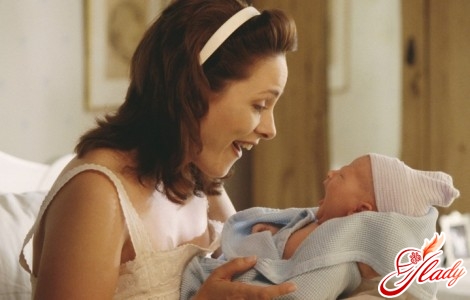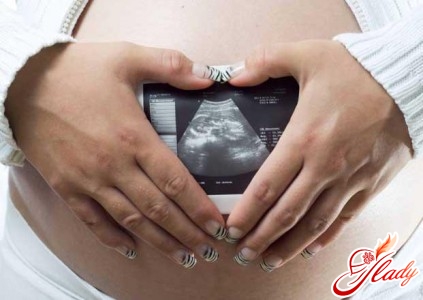 There is an opinion about the extreme traumaoperations of applying obstetric forceps and vacuum extraction of the fetus by the head. Indeed, the relative number of injuries sustained during childbirth in which these operations are performed is higher than during childbirth that can end spontaneously. The fact is that here cause and effect are reversed. The cause of the fetal injury is not the operation, but the condition in which it is performed. Think for yourself, what to do if the fetal head has already descended into the pelvic area, and labor activity has weakened? On the monitor, which records the fetal heartbeat, the obstetrician sees how it first quickens, then becomes irregular, and finally bradycardia begins - a slowing of the heartbeat. It is clear that the child is in danger and, if urgent measures are not taken, he will die. A cesarean section operation in such a situation is impossible. And extracting the fetus through an incision in the uterus, when its head has already descended into the pelvic area, is very difficult and will inevitably lead to injury to the child and the mother. The only thing that is possible here is the operation of applying obstetric forceps or vacuum extraction of the fetus. But the child is already suffering from hypoxia, and it is quite obvious that after birth he will not feel the best. Of course, the operation should be performed by an experienced specialist with careful observance of the technique of its implementation and, most importantly, in a timely manner, that is, when the condition of the fetus has not noticeably worsened or there is only a threat to its health. The essence of the operations of applying obstetric forceps and vacuum extraction of the fetus is that with the help of special devices an additional effort is created to extract the fetus from the birth canal. The difference between the operations is not so much in the method of extracting the fetus, but in the fact that forceps can completely replace labor (eliminate the need for pushing), and vacuum extraction only complements the mother's own efforts. Therefore, when tension in labor is contraindicated (this happens with heart defects in pregnant women, preeclampsia with high blood pressure, hypertension, etc.), obstetric forceps are applied at the end of the second stage of labor. When labor forces are weakened and there is a threat of fetal hypoxia, both of these operations can be performed. Extraction of the fetus by the head does not lead, as is sometimes thought, to stretching of the fetal neck and injury to the cervical spine, since when the fetal head is located in the pelvic cavity, the fetal shoulder girdle is in its wide part and does not experience any obstacles to its movement.
There is an opinion about the extreme traumaoperations of applying obstetric forceps and vacuum extraction of the fetus by the head. Indeed, the relative number of injuries sustained during childbirth in which these operations are performed is higher than during childbirth that can end spontaneously. The fact is that here cause and effect are reversed. The cause of the fetal injury is not the operation, but the condition in which it is performed. Think for yourself, what to do if the fetal head has already descended into the pelvic area, and labor activity has weakened? On the monitor, which records the fetal heartbeat, the obstetrician sees how it first quickens, then becomes irregular, and finally bradycardia begins - a slowing of the heartbeat. It is clear that the child is in danger and, if urgent measures are not taken, he will die. A cesarean section operation in such a situation is impossible. And extracting the fetus through an incision in the uterus, when its head has already descended into the pelvic area, is very difficult and will inevitably lead to injury to the child and the mother. The only thing that is possible here is the operation of applying obstetric forceps or vacuum extraction of the fetus. But the child is already suffering from hypoxia, and it is quite obvious that after birth he will not feel the best. Of course, the operation should be performed by an experienced specialist with careful observance of the technique of its implementation and, most importantly, in a timely manner, that is, when the condition of the fetus has not noticeably worsened or there is only a threat to its health. The essence of the operations of applying obstetric forceps and vacuum extraction of the fetus is that with the help of special devices an additional effort is created to extract the fetus from the birth canal. The difference between the operations is not so much in the method of extracting the fetus, but in the fact that forceps can completely replace labor (eliminate the need for pushing), and vacuum extraction only complements the mother's own efforts. Therefore, when tension in labor is contraindicated (this happens with heart defects in pregnant women, preeclampsia with high blood pressure, hypertension, etc.), obstetric forceps are applied at the end of the second stage of labor. When labor forces are weakened and there is a threat of fetal hypoxia, both of these operations can be performed. Extraction of the fetus by the head does not lead, as is sometimes thought, to stretching of the fetal neck and injury to the cervical spine, since when the fetal head is located in the pelvic cavity, the fetal shoulder girdle is in its wide part and does not experience any obstacles to its movement.

Making Money with Desserts: Success Stories
Evgeniya Polischuk (Fedutinova) instagram:@evgeniyafedutinovavk.com/janeshomebaking– It all started with baking for family and friends. Gradually, I started posting photos of my baked goods on Instagram – and orders started coming in. I made my first custom-made cake on October 13, 2014, and a little earlier I started making macaroons and cupcakes. You could say that the business “found me”, I am very […]

Soups are cold recipes with photos
Cold cucumber soup with yogurt and lemonsorbet from the chef of the restaurant La Taverna Alexander Zhurkin Photo: Getty Images Ingredients: Plain yoghurt – 125 g Cucumber – 150 g Lemon/lime sorbet – 50 g Cocktail shrimp – 24 g Fresh ginger juice – 1 g Lime juice – 5 g Fresh orange juice – 5 g Parsley – 1 g Pink pepper – 1 g Watercress – […]

barbeque kebab
Pork tenderloin in glaze Photo:Dmitry Bayrak/dbstudioPreparation time: 20 minutes + marinating time.Calories: 454 kcal per serving.For 4 servings: 4 pork tenderloins (approximately 300 g each), 1 onion, 2 cloves of garlic, 1 tsp. lemon zest, 1 tsp. lemon juice, a pinch of ground cumin, coriander and turmeric, 1 tbsp. vegetable […]

Pierre Duacan: dietary recipes: Ducane diet
Beetroot soup Photo:Season’S, Luxury Hotels RepresentationYou will need:· Boiled beetroot – 60 g· Fresh cucumbers – 20 g· Red radish – 20 g· Green onions – 10 g· Egg – 1 pc.· Drinking mineral water – 200 g· Salt – 1 gPreparation:· Boil the egg and beetroot.· Grate the cucumbers, radish and part of the beetroot. Put everything […]





